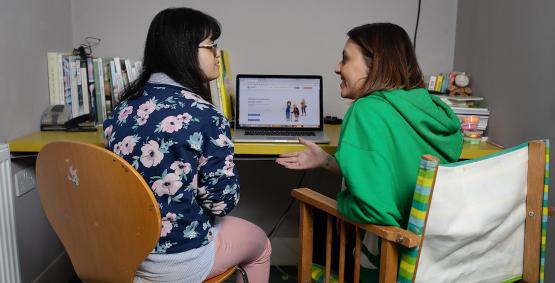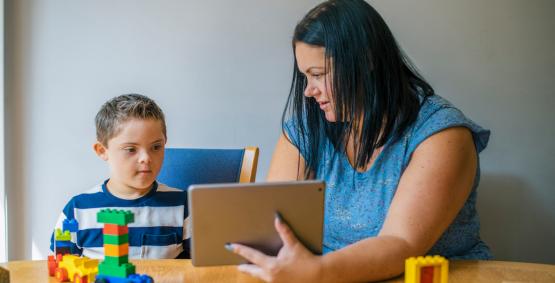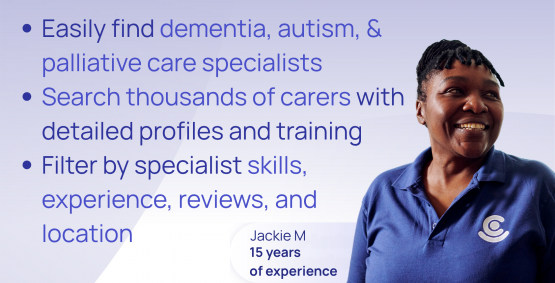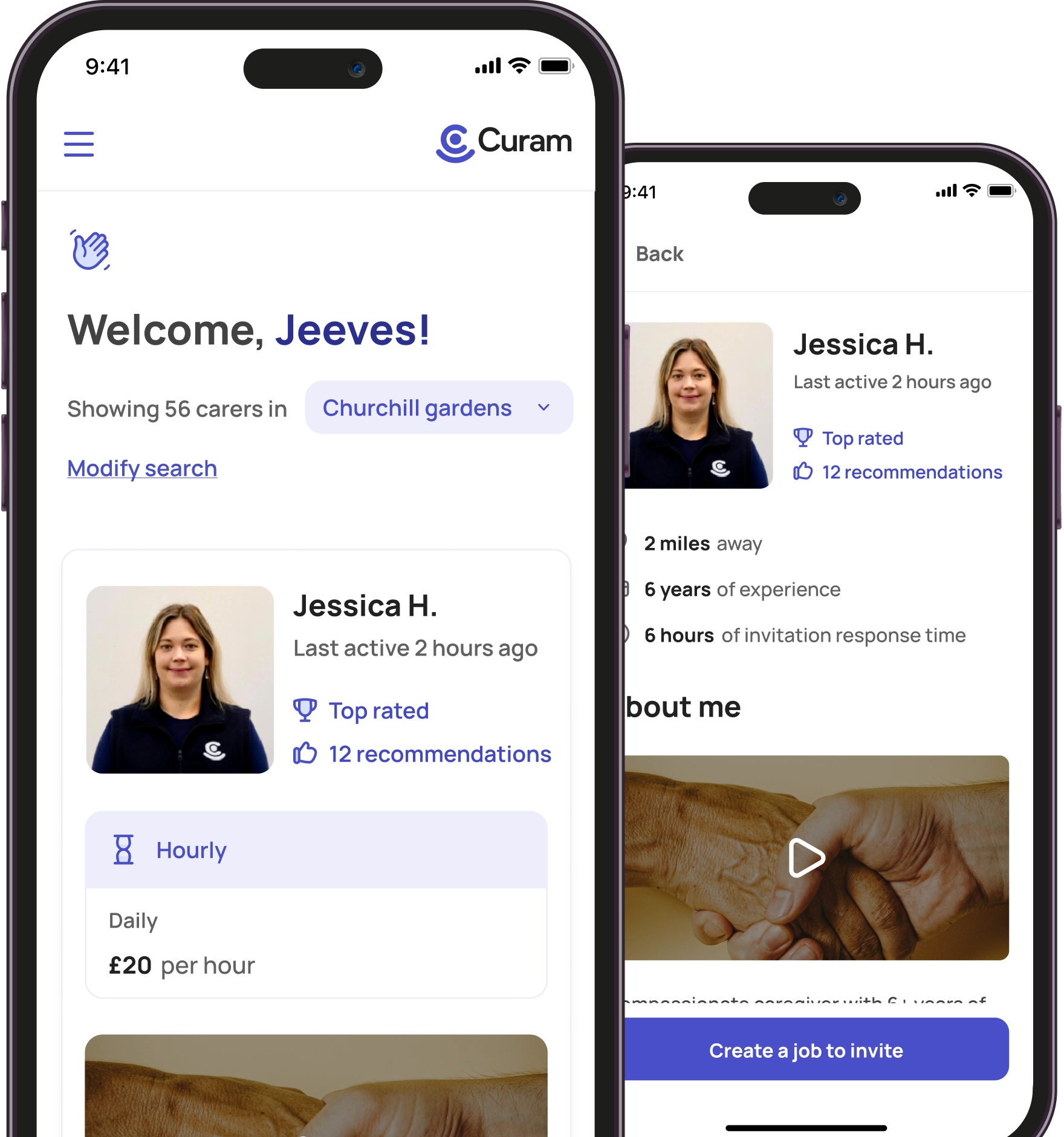Curam Team
December 02, 2020

A learning disability can make communicating and processing information more difficult. Therefore, it is important to know about the different ways to communicate with children, young adults or adults with learning disabilities.
In this article, we offer tips on how to communicate effectively with people with learning disabilities. We will talk about the management of communication needs in people with learning disabilities. This includes the following communication methods:
· Non-verbal communication with learning disabilities
· Verbal communication with learning disabilities
· Alternative forms of communication for learning disabilities (resources and technology).
Tips for communicating with someone who has a learning disability
People with learning disabilities can find communicating and conversations challenging. This is because a learning disability can make it harder to process complicated information or meanings.
Tips for verbal communication with learning disabilities
It is important to be empathetic and clear when having a conversation with someone who has a learning disability. When talking to someone with a learning disability:
· Ask the person with a learning disability how they would best like to communicate.
· Use words and phrases that are accessible.
· Let the person you are talking to lead the conversation.
· Ask open questions instead of ‘yes’ and ‘no’ questions. It can be difficult for someone with a learning disability to process the meaning of questions.
· Try not to use phrases, idioms or long words that might be hard to understand.
· Do not rush the person you are talking to.
· Make sure you have understood what the person was meaning to say.
· Check that you have understood what someone was saying by asking them (e.g., ‘I understood this..., is that right?’).
Each person with a learning disability has their own unique symptoms and experience, and will have different needs when it comes to communication. Here are some other communication tips to bear in mind:
· If possible, talk in person (conversations are clearer in person).
· If you have to phone someone, speak in a slow, clear manner and use words that are easy to understand.
· Communicate in a place without distractions (a quiet, calm space).
· Try to talk one-to-one, or make sure people in a group wait their turn to talk and do not speak over one another.
· Go after someone if they take you to show you something.
· Make a note of someone’s body language and expressions, these can sometimes tell you more than words.
· Use different communication tools (e.g., drawing, gestures, facial expressions).
· Bear in mind that some people prefer communicating by using objects, photos or pictures.
Tips for non-verbal communication with learning disabilities
A learning disability can make it more challenging for people to take in information, especially if it is complex and dense. When creating written communication for someone with a learning disability:
· Keep information simple and concise.
· Use large text, bullet points and not too much colour.
· Make sure you use a clear page lay-out
· Use pictures to represent what is written
You can also apply this information to online resources. Viewing information online can be a good option for people with learning disabilities as they can often change the text size, font and shape to best suit them. Moreover, it is possible to change the volume on videos and the speed of videos.
Learning disabilities resources for communication
Certain resources and technology can help people with learning disabilities to communicate or engage with information. These alternative forms of communication for learning disabilities are worth utilising if they work well for the individual you care for. Most learning disability communication skills resources use learning disability communication symbols. 3 of the best resources for people with learning disabilities include:
· Makaton
· Widgit
Makaton
Makaton is a programme that helps children or adults with learning disabilities to communicate independently. It utilises learning disability communication symbols, signs and speech.
Talking Mats for learning disabilities
Talking mats make communication simpler and easier. They help people with learning disabilities to organise their thoughts and express their feelings.
Widgit for learning disabilities
Widgit create software symbols to help people with learning disabilities understand information, and communicate easier. Widgit is very useful for people with learning disabilities that use computers and technology.
Support for people with learning disabilities
You many know a family member or friend who has a learning disability and needs care or support. Here at Curam we want to support you as best as we can by allowing you to choose the right carer and care type for you or your loved one.
There are other places you can go to find additional support and get in touch with people who are going through a similar situation:
· Call the Mencap Learning Disability Helpline - 0808 808 1111
· Find local learning disabilities services on the NHS.
· These apps can help people with a learning disability.
Support for carers
Curam is creating a better care community. We understand that carers are highly skilled professionals with expertise and experience that is invaluable.
Moreover, it is important that carers receive the support and help that they need. Introducing a personal assistant into a family’s life can give people the time they need to look after themselves whilst helping their loved ones receive the support they require. Here are a couple of places you can go for further support:
· Get in touch with the Carers trust
· Consider respite care






 Vetted & approved carers
Vetted & approved carers
 DBS checked & insured
DBS checked & insured
 Back
Back







